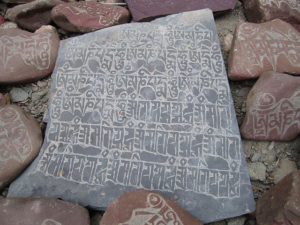Today we`re going to dive in deep in the meaning and importance of a particular ancient language – Sanskrit and why it is considered useful for artificial intelligence (AI).
About Sanskrit
Sanskrit is regarded as the ancient language in Hinduism, where it was used as a means of communication and dialogue by the Hindu Celestial Gods, and then by the Indo-Aryans. Sanskrit is also widely used in Jainism, Buddhism, and Sikhism. It is an extraordinarily complex language with a vast vocabulary. The Sanskrit language was termed as Deva-Vani (‘Deva’ Gods – ‘Vani’ language) as it was believed to have been generated by the god Brahma who passed it to the Rishis (sages), who then communicated the same to their earthly disciples from where it spread on earth. The origin of the language in written form is traced back to the 2nd millennium BCE when the Rig Veda, a collection of sacred hymns, is assumed to have been written after being continued for centuries through oral tradition and preservation of verbal knowledge. Sanskrit, in its variants and numerous dialects, was the lingua franca of ancient and medieval India.
This language is considered to be one of the most ancient on earth and it`s a fact that a lot of languages, not only Indian, have originated from it or “borrowed” vocabulary from it. English, the current modern international language, has also been influenced by Sanskrit and has picked up many loanwords from the ancient language (for example ‘primitive’ from ‘prachin’, meaning historical, ‘path’ from ‘patha’ meaning road or way, ‘man’ from ‘manu’ meaning a male human, ‘nirvana’ from ‘nirvan’ meaning divine liberation or transcendence, etc.) since both are considered as Indo-European languages.
Yes, Sanskrit was used centuries ago, but is it considered a dead language?
The commonly perceived purpose of a language is communication. With respect to that today Sanskrit has no importance. Sanskrit is a cryptic language – it was meant to convey the knowledge of Vedas, Philosophy, Spirituality, Science, Medicine, Politics, and Religion through various texts. However, even today Sanskrit has 14,135 native users. It is one of the official languages of India and is optionally taught to children at school. Some universities teach Sanskrit as a subject, as well. There are also Sanskrit newspapers and magazines and the works of the Sanskrit poets are still read by people all around the world. Turns out this language isn`t used in daily communication but it still bears and helps distribute so much important information. Some specialists compare it to the programming languages such as Java. We can`t say they have no significance just because they aren`t related to common speech or human interaction.
Why is it suitable for AI?
 Sanskrit is a very clean and straightforward language. The search for perfection in thought is the goal and meaning of this language. That is why today`s language specialists and experts in the area of Neural Machine Translations (NMT) are being intrigued by its structure and use. As you may read in our “Neural Machine Translation! What about Asian languages?” (link to the article) NMT is having difficulty with translations from and to Asian languages. The problem is that NMT wasn`t created for tonal languages or such that convey a lot of emotions.
Sanskrit is a very clean and straightforward language. The search for perfection in thought is the goal and meaning of this language. That is why today`s language specialists and experts in the area of Neural Machine Translations (NMT) are being intrigued by its structure and use. As you may read in our “Neural Machine Translation! What about Asian languages?” (link to the article) NMT is having difficulty with translations from and to Asian languages. The problem is that NMT wasn`t created for tonal languages or such that convey a lot of emotions.
Rick Briggs, a NASA scientist, refers to the difficulty an artificial intelligence would have in detecting the true meaning of words spoken or written in one of our natural languages. Take for example the base “ma” in Chinese Mandarin – depending on the intonation used, it can mean “mother”, “hemp”, “horse” or “scold”. Now imagine an artificial intelligence attempting to determine the meaning of the above example.
He suggests that Sanskrit, a very ancient form of communication but also very clear, is a naturally spoken language with mechanics and grammatical rules that would allow an artificial intelligence to more accurately interpret sentences during linguistic analysis. More accurate linguistic analysis would result in an artificial intelligence being able to respond more accurately.
Simply speaking, Briggs’ research digs into a special form of communication in Sanskrit which was used in an equivalent of today’s technical journals. When used, it breaks the sentence into different parts, that are very similar to the input data that one writes for a machine or a computer. The whole sentence becomes like a program with clear input data, which results in the meaning of the sentence as an answer to the program.
What amazes us here is how science and language can intercept in such a way. That two so different and distant in time things like the ancient language Sanskrit and modern Artificial Intelligence looking for a solution into natural languages can work together hand in hand.
It`s wonderful how science can be pushed further not only by the new discoveries of humanity but also by our historical heritage as a species, isn’t it?

